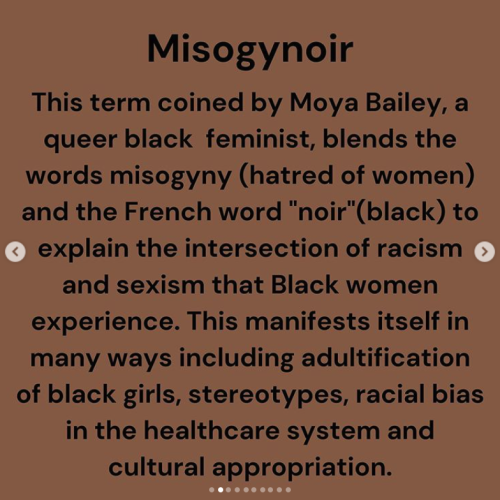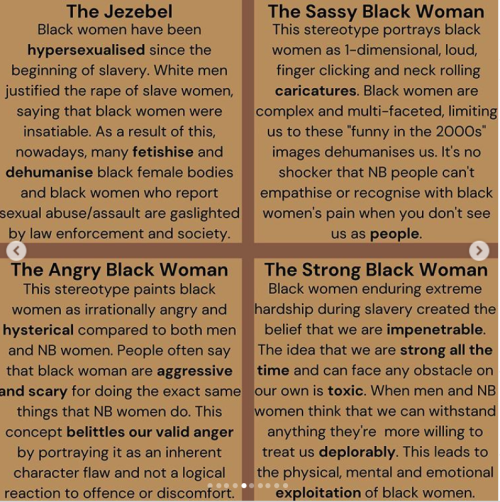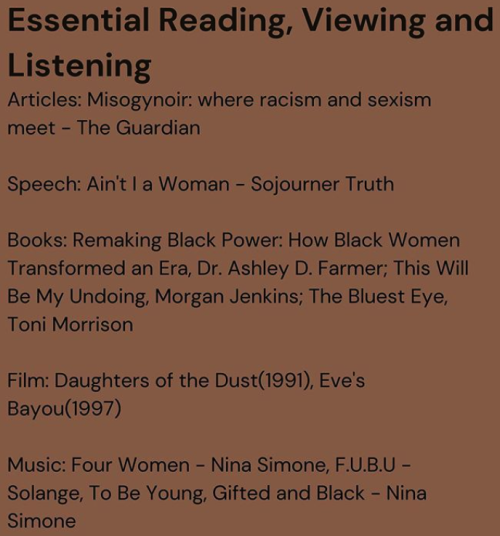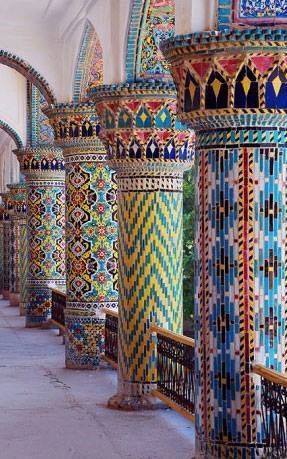I Just Thought This Set Of Tweets Was Really Important.





I just thought this set of tweets was really important.
More Posts from Cheeryblueheart and Others
hahahahaa.. this is so common in my city its not even funny anymore...










“The most disrespected person in America is the black woman. The most unprotected person in America is the black woman. The most neglected person in America is the black woman.”
-Malcolm X (1962)
(Originally found on insta from @ashleighchubbybunny)

Shunned at home, ‘Tortoise-man’ bags award for his act of kindness
By WANJIRU MACHARIA
Every day for the past 57 years, Mzee Job Tarkwen Kipkech, has diligently carried out his self-allocated task of helping tortoises cross the Mogotio-Marigat road.
And though the act of kindness never drew any appreciation from any quarters in his village, he was never perturbed and was always at hand daily to ensure one of the world’s slowest creatures made it across the road safely.
Kipkech, 73, a resident of Kures village in Mogotio, Baringo County says that instead of appreciating his acts, locals often questioned why he wasting time on the reptiles instead of performing more rewarding domestic chores.
“They would stare at me as I rescue the animals. Some rude motorists also ignore my pleadings and at times almost knock me down as I wave them down to allow the tortoises to cross the road,” he said in an interview with Nation.
That was until two years ago when one of the leading TV stations in the country noticed him and ran a story on his conservationist efforts.
Nothing happened immediately afterwards but last Wednesday, a call he never expected came. The caller informed him he has been named the over-all winner of the Jubilee Insurance Samaritan Award (JISA).
“I now believe that no prophet is honoured in his own hometown. It took people so many miles away, and not known to me to recognise by actions,” says the old man with a smile.
The father of five quickly adds that although he is happy somebody somewhere had recognised him, that did not mark the end of his rescue mission for the tortoises that are a common sight in the area.
“I do not do this to receive praises from people but it is uplifting to know that someone appreciates what you do,” he adds. But just how did the call to be the saviour for the tortoises come to be? Mzee Kipkech says he was herding his goats along the busy road at the youthful age of 20, when he noticed with pity, how the tortoises endangered their lives, ambling across the road, every move a close shave with death.
“All that this animal can do when it senses danger is recoil back into its shell and freeze but that is not enough to save it from being crashed by the vehicles,” he says.
This vulnerability touched him and he has since not stopped to pick up the reptiles and run with them to safety across the road. Alternatively, he waves approaching vehicles down to prevent them hurting the reptiles.
Mogotio is home to all the three types of tortoises in Kenya including the endangered Pancake species.
But Mzee Kipkech’s kindness does not end with helping the reptiles to cross the road. He often carries the injured ones home and tends to them as they heal. He also sprays them with acaricides to rid them of bothersome ticks.
And the reptiles seem to have detected his kindness as they keep turning up in his compound and have even turned his farm into a breeding ground.
The old man has appealed to Kenya Wildlife Service to build a water pan on his land to avoid subjecting the reptiles to the treacherous journey for water across the road.
source
I want to live by myself when I move out of my parent's place but I'm really afraid of money problems? I'm afraid that the only place I can afford will be in the ghetto and it'll all be torn apart and I'll only be allowed to eat one granola bar a week. I'm really stressing out about this. I don't know anything about after school life. I don't know anything about paying bills or how to buy an apartment and it's really scaring me. is there anything you know that can help me?
HI darling,
I’ve actually got a super wonderful masterpost for you to check out:
Home
what the hell is a mortgage?
first apartment essentials checklist
how to care for cacti and succulents
the care and keeping of plants
Getting an apartment
Money
earn rewards by taking polls
how to coupon
what to do when you can’t pay your bills
see if you’re paying too much for your cell phone bill
how to save money
How to Balance a Check Book
How to do Your Own Taxes
Health
how to take care of yourself when you’re sick
things to bring to a doctor’s appointment
how to get free therapy
what to expect from your first gynecologist appointment
how to make a doctor’s appointment
how to pick a health insurance plan
how to avoid a hangover
a list of stress relievers
how to remove a splinter
Emergency
what to do if you get pulled over by a cop
a list of hotlines in a crisis
things to keep in your car in case of an emergency
how to do the heimlich maneuver
Job
time management
create a resume
find the right career
how to pick a major
how to avoid a hangover
how to interview for a job
how to stop procrastinating
How to write cover letters
Travel
ULTIMATE PACKING LIST
Traveling for Cheap
Travel Accessories
The Best Way to Pack a Suitcase
How To Read A Map
How to Apply For A Passport
How to Make A Travel Budget
Better You
read the news
leave your childhood traumas behind
how to quit smoking
how to knit
how to stop biting your nails
how to stop procrastinating
how to stop skipping breakfast
how to stop micromanaging
how to stop avoiding asking for help
how to stop swearing constantly
how to stop being a pushover
learn another language
how to improve your self-esteem
how to sew
learn how to embroider
how to love yourself
100 tips for life
Apartments/Houses/Moving
Moving Out and Getting an Apartment, Part 1: Are You Sure? (The Responsible One)
Moving Out and Getting an Apartment, Part 2: Finding the Damn Apartment (The Responsible One)
Moving Out and Getting an Apartment, Part 3: Questions to Ask about the Damn Apartment (The Responsible One)
Moving Out and Getting an Apartment, Part 4: Packing and Moving All of Your Shit (The Responsible One)
How to Protect Your Home Against Break-Ins (The Responsible One)
Education
How to Find a Fucking College (The Sudden Adult)
How to Find Some Fucking Money for College (The Sudden Adult)
What to Do When You Can’t Afford Your #1 Post-Secondary School (The Sudden Adult)
Stop Shitting on Community College Kids (Why Community College is Fucking Awesome) (The Responsible One)
How to Ask for a Recommendation Letter (The Responsible One)
How to Choose a College Major (The Sudden Adult)
Finances
How to Write a Goddamn Check (The Responsible One)
How to Convince Credit Companies You’re Not a Worthless Bag of Shit (The Responsible One)
Debit vs Credit (The Responsible One)
What to Do if Your Wallet is Stolen/Lost (The Sudden Adult)
Budgeting 101 (The Responsible One)
Important Tax Links to Know (The Responsible One)
How to Choose a Bank Without Screwing Yourself (The Responsible One)
Job Hunting
How to Write a Resume Like a Boss (The Responsible One)
How to Write a Cover Letter Someone Will Actually Read (The Responsible One)
How to Handle a Phone Interview without Fucking Up (The Responsible One)
10 Sites to Start Your Job Search (The Responsible One)
Life Skills
Staying in Touch with Friends/Family (The Sudden Adult)
Bar Etiquette (The Sudden Adult)
What to Do After a Car Accident (The Sudden Adult)
Grow Up and Buy Your Own Groceries (The Responsible One)
How to Survive Plane Trips (The Sudden Adult)
How to Make a List of Goals (The Responsible One)
How to Stop Whining and Make a Damn Appointment (The Responsible One)
Miscellaneous
What to Expect from the Hell that is Jury Duty (The Responsible One)
Relationships
Marriage: What the Fuck Does It Mean and How the Hell Do I Know When I’m Ready? (Guest post - The Northwest Adult)
How Fucked Are You for Moving In with Your Significant Other: An Interview with an Actual Real-Life Couple Living Together™ (mintypineapple and catastrofries)
Travel & Vehicles
How to Winterize Your Piece of Shit Vehicle (The Responsible One)
How to Make Public Transportation Your Bitch (The Responsible One)
Other Blog Features
Apps for Asshats
Harsh Truths & Bitter Reminders
Asks I’ll Probably Need to Refer People to Later
Apartments (or Life Skills) - How Not to Live in Filth (The Sudden Adult)
Finances - Tax Basics (The Responsible One)
Important Documents - How to Get a Copy of Your Birth Certificate (The Responsible One)
Important Documents - How to Get a Replacement ID (The Responsible One)
Health - How to Deal with a Chemical Burn (The Responsible One)
Job Hunting - List of Jobs Based on Social Interaction Levels (The Sudden Adult)
Job Hunting - How to Avoid Falling into a Pit of Despair While Job Hunting (The Responsible One)
Job Hunting - Questions to Ask in an Interview (The Responsible One)
Life Skills - First-Time Flying Tips (The Sudden Adult)
Life Skills - How to Ask a Good Question (The Responsible One)
Life Skills - Reasons to Take a Foreign Language (The Responsible One)
Life Skills - Opening a Bar Tab (The Sudden Adult)
Relationships - Long Distance Relationships: How to Stay in Contact (The Responsible One)
Adult Cheat Sheet:
what to do if your pet gets lost
removing stains from your carpet
how to know if you’re eligible for food stamps
throwing a dinner party
i’m pregnant, now what?
first aid tools to keep in your house
how to keep a clean kitchen
learning how to become independent from your parents
job interview tips
opening your first bank account
what to do if you lose your wallet
tips for cheap furniture
easy ways to cut your spending
selecting the right tires for your car
taking out your first loan
picking out the right credit card
how to get out of parking tickets
how to fix a leaky faucet
get all of your news in one place
getting rid of mice & rats in your house
when to go to the e.r.
buying your first home
how to buy your first stocks
guide to brewing coffee
first apartment essentials checklist
coping with a job you hate
30 books to read before you’re 30
what’s the deal with retirement?
difference between insurances
Once you’ve looked over all those cool links, I have some general advice for you on how you can have some sort of support system going for you:
Reasons to move out of home
You may decide to leave home for many different reasons, including:
wishing to live independently
location difficulties – for example, the need to move closer to university
conflict with your parents
being asked to leave by your parents.
Issues to consider when moving out of home
It’s common to be a little unsure when you make a decision like leaving home. You may choose to move, but find that you face problems you didn’t anticipate, such as:
Unreadiness – you may find you are not quite ready to handle all the responsibilities.
Money worries – bills including rent, utilities like gas and electricity and the cost of groceries may catch you by surprise, especially if you are used to your parents providing for everything. Debt may become an issue.
Flatmate problems – issues such as paying bills on time, sharing housework equally, friends who never pay board, but stay anyway, and lifestyle incompatibilities (such as a non-drug-user flatting with a drug user) may result in hostilities and arguments.
Your parents may be worried
Think about how your parents may be feeling and talk with them if they are worried about you. Most parents want their children to be happy and independent, but they might be concerned about a lot of different things. For example:
They may worry that you are not ready.
They may be sad because they will miss you.
They may think you shouldn’t leave home until you are married or have bought a house.
They may be concerned about the people you have chosen to live with.
Reassure your parents that you will keep in touch and visit regularly. Try to leave on a positive note. Hopefully, they are happy about your plans and support your decision.
Tips for a successful move
Tips include:
Don’t make a rash decision – consider the situation carefully. Are you ready to live independently? Do you make enough money to support yourself? Are you moving out for the right reasons?
Draw up a realistic budget – don’t forget to include ‘hidden’ expenses such as the property’s security deposit or bond (usually four weeks’ rent), connection fees for utilities, and home and contents insurance.
Communicate – avoid misunderstandings, hostilities and arguments by talking openly and respectfully about your concerns with flatmates and parents. Make sure you’re open to their point of view too – getting along is a two-way street.
Keep in touch – talk to your parents about regular home visits: for example, having Sunday night dinner together every week.
Work out acceptable behaviour – if your parents don’t like your flatmate(s), find out why. It is usually the behaviour rather than the person that causes offence (for example, swearing or smoking). Out of respect for your parents, ask your flatmate(s) to be on their best behaviour when your parents visit and do the same for them.
Ask for help – if things are becoming difficult, don’t be too proud to ask your parents for help. They have a lot of life experience.
If your family home does not provide support
Not everyone who leaves home can return home or ask their parents for help in times of trouble. If you have been thrown out of home or left home to escape abuse or conflict, you may be too young or unprepared to cope.
If you are a fostered child, you will have to leave the state-care system when you turn 18, but you may not be ready to make the sudden transition to independence.
If you need support, help is available from a range of community and government organisations. Assistance includes emergency accommodation and food vouchers. If you can’t call your parents or foster parents, call one of the associations below for information, advice and assistance.
Where to get help
Your doctor
Kids Helpline Tel. 1800 55 1800
Lifeline Tel. 13 11 44
Home Ground Services Tel. 1800 048 325
Relationships Australia Tel. 1300 364 277
Centrelink Crisis or Special Help Tel. 13 28 50
Tenants Union of Victoria Tel. (03) 9416 2577
Things to remember
Try to solve any problems before you leave home. Don’t leave because of a fight or other family difficulty if you can possibly avoid it.
Draw up a realistic budget that includes ‘hidden’ expenses, such as bond, connection fees for utilities, and home and contents insurance.
Remember that you can get help from a range of community and government organizations.
(source)
Keep me updated? xx
Fantasy Guide to Architecture






This post has been waiting on the back burner for weeks and during this time of quarantine, I have decided to tackle it. This is probably the longest post I have ever done. I is very tired and hope that I have covered everything from Ancient times to the 19th Century, that will help you guys with your worldbuilding.
Materials
What you build with can be determined by the project you intend, the terrain you build on and the availability of the material. It is one characteristic that we writers can take some some liberties with.
Granite: Granite is an stone formed of Igneous activity near a fissure of the earth or a volcano. Granites come in a wide range of colour, most commonly white, pink, or grey depending on the minerals present. Granite is hard and a durable material to build with. It can be built with without being smoothed but it looks bitchin' and shiny all polished up.
Marble: Probably everyone's go to materials for building grand palaces and temples. Marble is formed when great pressure is placed on limestone. Marble can be easily damaged over time by rain as the calcium in the rock dissolves with the chemicals found in rain. Marble comes in blue, white, green, black, white, red, gray and yellow. Marble is an expensive material to build with, highly sought after for the most important buildings. Marble is easy to carve and shape and polishes to a high gleam. Marble is found at converging plate boundaries.
Obsidian: Obsidian is probably one of the most popular stones mentioned in fantasy works. Obsidian is an igneous rock formed of lava cooling quickly on the earth's surfaces. Obsidian is a very brittle and shiny stone, easy to polish but not quite a good building material but a decorative one.
Limestone: Limestone is made of fragments of marine fossils. Limestone is one of the oldest building materials. Limestone is an easy material to shape but it is easily eroded by rain which leads most limestone monuments looking weathered.
Concrete: Concrete has been around since the Romans. Concrete is formed when aggregate (crushed limstone, gravel or granite mixed with fine dust and sand) is mixed with water. Concrete can be poured into the desired shape making it a cheap and easy building material.
Brick: Brick was one of history's most expensive materials because they took so long to make. Bricks were formed of clay, soil, sand, and lime or concrete and joined together with mortar. The facade of Hampton Court Palace is all of red brick, a statement of wealth in the times.
Glass: Glass is formed of sand heated until it hardens. Glass is an expensive material and for many years, glass could not be found in most buildings as having glass made was very expensive.
Plaster: Plaster is made from gypsum and lime mixed with water. It was used for decoration purposes and to seal walls. A little known fact, children. Castle walls were likely painted with plaster or white render on the interior.
Wattle and Daub: Wattle and daub is a building material formed of woven sticks cemented with a mixture of mud, one of the most common and popular materials throughout time.
Building terms
Arcade: An arcade is a row of arches, supported by columns.
Arch: An arch is a curved feature built to support weight often used for a window or doorway.
Mosaic: Mosaics are a design element that involves using pieces of coloured glass and fitted them together upon the floor or wall to form images.
Frescos: A design element of painting images upon wet plaster.
Buttress: A structure built to reinforce and support a wall.
Column: A column is a pillar of stone or wood built to support a ceiling. We will see more of columns later on.
Eave: Eaves are the edges of overhanging roofs built to allow eater to run off.
Vaulted Ceiling: The vaulted ceilings is a self-supporting arched ceiling, than spans over a chamber or a corridor.
Colonnade: A colonnade is a row of columns joined the entablature.
Entablature: a succession of bands laying atop the tops of columns.
Bay Window: The Bay Window is a window projecting outward from a building.
Courtyard/ Atrium/ Court: The courtyard is an open area surrounded by buildings on all sides
Dome: The dome resembles a hollow half of a sphere set atop walls as a ceiling.
Façade: the exterior side of a building
Gable: The gable is a triangular part of a roof when two intersecting roof slabs meet in the middle.
Hyphen: The hyphen is a smaller building connecting between two larger structures.
Now, let's look at some historical building styles and their characteristics of each Architectural movement.
Classical Style
The classical style of Architecture cannot be grouped into just one period. We have five: Doric (Greek), Ionic (Greek), Corinthian (Greek), Tuscan (Roman) and Composite (Mixed).
Doric: Doric is the oldest of the orders and some argue it is the simplest. The columns of this style are set close together, without bases and carved with concave curves called flutes. The capitals (the top of the column) are plain often built with a curve at the base called an echinus and are topped by a square at the apex called an abacus. The entablature is marked by frieze of vertical channels/triglyphs. In between the channels would be detail of carved marble. The Parthenon in Athens is your best example of Doric architecture.
Ionic: The Ionic style was used for smaller buildings and the interiors. The columns had twin volutes, scroll-like designs on its capital. Between these scrolls, there was a carved curve known as an egg and in this style the entablature is much narrower and the frieze is thick with carvings. The example of Ionic Architecture is the Temple to Athena Nike at the Athens Acropolis.
Corinthian: The Corinthian style has some similarities with the Ionic order, the bases, entablature and columns almost the same but the capital is more ornate its base, column, and entablature, but its capital is far more ornate, commonly carved with depictions of acanthus leaves. The style was more slender than the others on this list, used less for bearing weight but more for decoration. Corinthian style can be found along the top levels of the Colosseum in Rome.
Tuscan: The Tuscan order shares much with the Doric order, but the columns are un-fluted and smooth. The entablature is far simpler, formed without triglyphs or guttae. The columns are capped with round capitals.
Composite: This style is mixed. It features the volutes of the Ionic order and the capitals of the Corinthian order. The volutes are larger in these columns and often more ornate. The column's capital is rather plain. for the capital, with no consistent differences to that above or below the capital.
Islamic Architecture
Islamic architecture is the blanket term for the architectural styles of the buildings most associated with the eponymous faith. The style covers early Islamic times to the present day. Islamic Architecture has some influences from Mesopotamian, Roman, Byzantine, China and the Mongols.
Paradise garden: As gardens are an important symbol in Islam, they are very popular in most Islamic-style buildings. The paradise gardens are commonly symmetrical and often enclosed within walls. The most common style of garden is split into four rectangular with a pond or water feature at the very heart. Paradise gardens commonly have canals, fountains, ponds, pools and fruit trees as the presence of water and scent is essential to a paradise garden.
Sehan: The Sehan is a traditional courtyard. When built at a residence or any place not considered to be a religious site, the sehan is a private courtyard. The sehan will be full of flowering plants, water features snd likely surrounded by walls. The space offers shade, water and protection from summer heat. It was also an area where women might cast off their hijabs as the sehan was considered a private area and the hijab was not required. A sehan is also the term for a courtyard of a mosque. These courtyards would be surrounded by buildings on all sides, yet have no ceiling, leaving it open to the air. Sehans will feature a cleansing pool at the centre, set under a howz, a pavilion to protect the water. The courtyard is used for rituals but also a place of rest and gathering.
Hypostyle Hall: The Hypostyle is a hall, open to the sky and supported by columns leading to a reception hall off the main hall to the right.
Muqarnas : Muqarnas is a type of ornamentation within a dome or a half domed, sometimes called a "honeycomb", or "stalactite" vaulted ceiling. This would be cast from stone, wood, brick or stucco, used to ornament the inside of a dome or cupola. Muqarnas are used to create transitions between spaces, offering a buffer between the spaces.
African Architecture
African Architecture is a very mixed bag and more structurally different and impressive than Hollywood would have you believe. Far beyond the common depictions of primitive buildings, the African nations were among the giants of their time in architecture, no style quite the same as the last but just as breathtaking.
Somali architecture: The Somali were probably had one of Africa's most diverse and impressive architectural styles. Somali Architecture relies heavy on masonry, carving stone to shape the numerous forts, temples, mosques, royal residences, aqueducts and towers. Islamic architecture was the main inspiration for some of the details of the buildings. The Somali used sun-dried bricks, limestone and many other materials to form their impressive buildings, for example the burial monuments called taalo
Ashanti Architecture: The Ashanti style can be found in present day Ghana. The style incorporates walls of plaster formed of mud and designed with bright paint and buildings with a courtyard at the heart, not unlike another examples on this post. The Ashanti also formed their buildings of the favourite method of wattle and daub.
Afrikaner Architecture: This is probably one of the oddest architectural styles to see. Inspired by Dutch settlers (squatters), the buildings of the colony (planters/squatters) of South Africa took on a distinctive Dutch look but with an Afrikaner twist to it making it seem both familiar and strange at the same time.
Rwandan Architecture: The Rwandans commonly built of hardened clay with thatched roofs of dried grass or reeds. Mats of woven reeds carpeted the floors of royal abodes. These residences folded about a large public area known as a karubanda and were often so large that they became almost like a maze, connecting different chambers/huts of all kinds of uses be they residential or for other purposes.
Aksumite Architecture: The Aksumite was an Empire in modern day Ethiopia. The Aksumites created buildings from stone, hewn into place. One only has to look at the example of Bete Medhane Alem to see how imposing it was.
Yoruba Architecture: Yoruba Architecture was made by earth cured until it hardened enough to form into walls, or they used wattle and daub, roofed by timbers slats coated in woven grass or leaves. Each unit divided up parts of the buildings from facilities to residences, all with multiple entrances, connected together.
Igbo Architecture: The Igbo style follows some patterns of the Yoruba architecture, excepting that there are no connected walls and the spacing is not so equal. The closer a unit was to the centre, the more important inhabitants were.
Hausa architecture: Hausa Architecture was formed of monolithic walls coated in plaster. The ceilings and roof of the buildings were in the shape of small domes and early vaulted ceilings of stripped timber and laterite. Hausa Architecture features a single entrance into the building and circular walls.
Nubian Architecture: Nubia, in modern day Ethiopia, was home to the Nubians who were one of the world's most impressive architects at the beginning of the architecture world and probably would be more talked about if it weren't for the Egyptians building monuments only up the road. The Nubians were famous for building the speos, tall tower-like spires carved of stone. The Nubians used a variety of materials and skills to build, for example wattle and daub and mudbrick. The Kingdom of Kush, the people who took over the Nubian Empire was a fan of Egyptian works even if they didn't like them very much. The Kushites began building pyramid-like structures such at the sight of Gebel Barkal
Egyptian Architecture: The Egyptians were the winners of most impressive buildings for s good while. Due to the fact that Egypt was short on wood, Ancient Egyptians returned to building with limestone, granite, mudbrick, sandstone which were commonly painted with bright murals of the gods along with some helpful directions to Anubis's crib. The Egyptians are of course famous for their pyramids but lets not just sit on that bandwagon. Egyptian Architecture sported all kinds of features such as columns, piers, obelisks and carving buildings out of cliff faces as we see at Karnak. The Egyptians are cool because they mapped out their buildings in such a way to adhere to astrological movements meaning on special days if the calendar the temple or monuments were in the right place always. The Egyptians also only build residences on the east bank of the Nile River, for the opposite bank was meant for the dead. The columns of Egyptian where thicker, more bulbous and often had capitals shaped like bundles of papyrus reeds.
Chinese Architecture
Chinese Architecture is probably one of the most recognisable styles in the world. The grandness of Chinese Architecture is imposing and beautiful, as classical today as it was hundreds of years ago.
The Presence of Wood: As China is in an area where earthquakes are common, most of the buildings are were build of wood as it was easy to come across and important as the Ancient Chinese wanted a connection to nature in their homes.
Overhanging Roofs: The most famous feature of the Chinese Architectural style are the tiled roofs, set with wide eaves and upturned corners. The roofs were always tiled with ceramic to protect wood from rotting. The eaves often overhung from the building providing shade.
Symmetrical Layouts: Chinese Architecture is symmetrical. Almost every feature is in perfect balance with its other half.
Fengshui: Fengshui are philosophical principles of how to layout buildings and towns according to harmony lain out in Taoism. This ensured that the occupants in the home where kept in health, happiness, wealth and luck.
One-story: As China is troubled by earthquakes and wood is not a great material for building multi-storied buildings, most Chinese buildings only rise a single floor. Richer families might afford a second floor but the single stories compounds were the norm.
Orientation: The Ancient Chinese believed that the North Star marked out Heaven. So when building their homes and palaces, the northern section was the most important part of the house and housed the heads of the household.
Courtyards: The courtyard was the most important area for the family within the home. The courtyard or siheyuan are often built open to the sky, surrounded by verandas on each side.
Japanese Architecture
Japanese Architecture is famous for its delicacy, smooth beauty and simplistic opulence. Japanese Architecture has been one of the world's most recognisable styles, spanning thousands of years.
Wood as a Common Material: As with the Chinese, the most popular material used by the Japanese is wood. Stone and other materials were not often used because of the presence of earthquakes. Unlike Chinese Architecture, the Japanese did not paint the wood, instead leaving it bare so show the grain.
Screens and sliding doors: The shoji and fusuma are the screens and sliding doors are used in Japanese buildings to divide chambers within the house. The screens were made of light wood and thin parchment, allowing light through the house. The screens and sliding doors were heavier when they where used to shutter off outside features.
Tatami: Tatami mats are used within Japanese households to blanket the floors. They were made of rice straw and rush straw, laid down to cushion the floor.
Verandas: It is a common feature in older Japanese buildings to see a veranda along the outside of the house. Sometimes called an engawa, it acted as an outdoor corridor, often used for resting in.
Genkan: The Genkan was a sunken space between the front door and the rest of the house. This area is meant to separate the home from the outside and is where shoes are discarded before entering.
Nature: As both the Shinto and Buddhist beliefs are great influences upon architecture, there is a strong presence of nature with the architecture. Wood is used for this reason and natural light is prevalent with in the home. The orientation is meant to reflect the best view of the world.
Indian Architecture
India is an architectural goldmine. There are dozens of styles of architecture in the country, some spanning back thousands of years, influenced by other cultures making a heady stew of different styles all as beautiful and striking as the last.
Mughal Architecture: The Mughal architecture blends influences from Islamic, Persian along with native Indian. It was popular between the 16th century -18th century when India was ruled by Mughal Emperors. The Taj Mahal is the best example of this.
Indo-Saracenic Revival Architecture: Indo Saracenic Revival mixes classical Indian architecture, Indo-Islamic architecture, neo-classical and Gothic revival of the 1800s.
Cave Architecture: The cave architecture is probably one of the oldest and most impressive styles of Indian architecture. In third century BC, monks carved temples and buildings into the rock of caves.
Rock-Cut Architecture: The Rock-cut is similar to the cave style, only that the rock cut is carved from a single hunk of natural rock, shaped into buildings and sprawling temples, all carved and set with statues.
Vesara Architecture: Vesara style prevalent in medieval period in India. It is a mixture of the Dravida and the Nagara styles. The tiers of the Vesara style are shorter than the other styles.
Dravidian Architecture: The Dravidian is the southern temple architectural style. The Kovils are an example of prime Dravidian architecture. These monuments are of carved stone, set up in a step like towers like with statues of deities and other important figures adorning them.
Kalinga Architecture: The Kalinga style is the dominant style in the eastern Indian provinces. The Kalinga style is famous for architectural stipulations, iconography and connotations and heavy depictions of legends and myths.
Sikh Architecture: Sikh architecture is probably the most intricate and popular of the styles here. Sikh architecture is famous for its soft lines and details.
Romanesque (6th -11th century/12th)
Romanesque Architecture is a span between the end of Roman Empire to the Gothic style. Taking inspiration from the Roman and Byzantine Empires, the Romanesque period incorporates many of the styles.
Rounded arches: It is here that we see the last of the rounded arches famous in the classical Roman style until the Renaissance. The rounded arches are very popular in this period especially in churches and cathedrals. The rounded arches were often set alongside each other in continuous rows with columns in between.
Details: The most common details are carved floral and foliage symbols with the stonework of the Romanesque buildings. Cable mouldings or twisted rope-like carvings would have framed doorways.
Pillars: The Romanesque columns is commonly plainer than the classical columns, with ornate captials and plain bases. Most columns from this time are rather thick and plain.
Barrel Vaults: A barrel vaulted ceiling is formed when a curved ceiling or a pair of curves (in a pointed ceiling). The ceiling looks rather like half a tunnel, completely smooth and free of ribs, stone channels to strengthen the weight of the ceiling.
Arcading: An arcade is a row of arches in a continual row, supported by columns in a colonnade. Exterior arcades acted as a sheltered passage whilst inside arcades or blind arcades, are set against the wall the arches bricked, the columns and arches protruding from the wall.
Gothic Architecture (12th Century - 16th Century)
The Gothic Architectural style is probably one of the beautiful of the styles on this list and one of most recognisable. The Gothic style is a dramatic, opposing sight and one of the easiest to describe.
Pointed arch: The Gothic style incorporates pointed arches, in the windows and doorways. The arches were likely inspired by pre-Islamic architecture in the east.
Ribbed vault: The ribbed vault of the Gothic age was constructed of pointed arches. The trick with the ribbed vaulted ceiling, is that the pointed arches and channels to bear the weight of the ceiling.
Buttresses: The flying buttress is designed to support the walls. They are similar to arches and are connected to counter-supports fixed outside the walls.
Stained-Glass Window: This is probably one of the most recognisable and beautiful of the Gothic features. They can be set in round rose windows or in the pointed arches.
Renaissance Architecture (15th Century- 17th Century)
Renaissance architecture was inspired by Ancient Roman and Greek Architecture. Renaissance Architecture is Classical on steroids but has its own flare. The Renaissance was a time for colour and grandeur.
Columns and pilasters: Roman and Greek columns were probably the greatest remix of the Renaissance period. The architecture of this period incorporated the five orders of columns are used: Tuscan, Doric, Ionic, Corinthian and Composite. The columns were used to hold up a structure, support ceilings and adorn facades. Pilasters were columns within a chamber, lining the walls for pure decoration purposes.
Arches: Arches are rounded in this period, having a more natural semi-circular shape at its apex. Arches were a favourite feature of the style, used in windows, arcades or atop columns.
Cupola: Is a small dome-like tower atop a bigger dome or a rooftop meant to allow light and air into the chamber beneath.
Vaulted Ceiling/Barrel Vault: Renaissance vaulted ceilings do not have ribs. Instead they are semi-circular in shape, resting upon a square plain rather than the Gothic preference of rectangular. The barrel vault held by its own weight and would likely be coated in plaster and painted.
Domes: The dome is the architectural feature of the Renaissance. The ceiling curves inwards as it rises, forming a bowl like shape over the chamber below. The dome's revival can be attributed to Brunelleschi and the Herculean feat of placing a dome on the Basilica di Santa Maria del Fiore. The idea was later copied by Bramante who built St. Peter's Basilica.
Frescos: To decorate the insides of Renaissance buildings, frescos (the art of applying wet paint to plaster as it dries) were used to coat the walls and ceilings of the buildings. The finest frescos belong to Michelangelo in the Sistine Chapel.
Baroque (1625–1750)
Baroque incorporates some key features of Renaissance architecture, such as those nice columns and domes we saw earlier on. But Baroque takes that to the next level. Everything is higher, bigger, shinier, brighter and more opulent. Some key features of Baroque palaces and buildings would be:
Domes: These domes were a common feature, left over from the Renaissance period. Why throw out a perfectly good bubble roof, I ask you? But Baroque domes were of course, grander. Their interiors were were nearly always painted or gilded, so it drew the eye upwards which is basically the entire trick with Baroque buildings. Domes were not always round in this building style and Eastern European buildings in Poland and Ukraine for example sport pear-shaped domes.
Solomonic columns: Though the idea of columns have been about for years but the solomonic columns but their own twist on it. These columns spiral from beginning to end, often in a s-curved pattern.
Quadratura: Quadratura was the practice of painting the ceilings and walls of a Baroque building with trompe-l'oeil. Most real life versions of this depict angels and gods in the nude. Again this is to draw the eye up.
Mirrors: Mirrors came into popularity during this period as they were a cool way to create depth and light in a chamber. When windows faced the mirrors on the wall, it creates natural light and generally looks bitchin'. Your famous example is the Hall of Mirrors at the Palace of Versailles.
Grand stairways: The grand sweeping staircases became popular in this era, often acting as the centre piece in a hall. The Baroque staircase would be large and opulent, meant for ceremonies and to smoother guests in grandeur.
Cartouche: The cartouche is a design that is created to add some 3D effect to the wall, usually oval in shape with a convex surface and edged with scrollwork. It is used commonly to outline mirrors on the wall or crest doorways just to give a little extra opulence.
Neoclassical (1750s-19th century)
The Neoclassical Period involved grand buildings inspired by the Greek orders, the most popular being the Doric. The main features of Neoclassical architecture involve the simple geometric lines, columns, smooth walls, detailing and flat planed surfaces. The bas-reliefs of the Neoclassical style are smoother and set within tablets, panels and friezes. St. Petersburg is famous for the Neoclassical styles brought in under the reign of Catherine the Great.
Greek Revival (late 18th and early 19th century)
As travel to other nations became easier in this time period, they became to get really into the Ancient Greek aesthetic. During this architectural movement they brought back the gabled roof, the columns and the entablature. The Greek Revival was more prevalent in the US after the Civil War and in Northern Europe.
Hope this helps somewhat @marril96
Tip Sheet: Business and Dining Etiquette
This post and any other later posts labeled as tips sheet come from a college website I found while searching around about jobs. I’m bringing it to you all to save you the hassle. Enjoy!
How you conduct yourself and treat others in a business or dining setting speaks strongly of who you are as a professional. Research worldwide tips and strategies before traveling as different cultures have different protocols.
General Tips
Use titles (Mr. Ms. Dr.), not first names until instructed to do so.
Be on time or 5-15 minutes early. Earlier than that can be awkward and invasive.
Prepare for meeting, developing an agenda if you are leading.
Do not interrupt meeting agendas, but in a timely manner, be confident in concisely sharing on-topic ideas/opinions.
Do not get intoxicated at work functions.
Do not use profanity or tell off-colored jokes.
Do not engage in office gossip.
Bring a positive attitude and leave personal drama at home.
Do not air work-related frustrations via social media (e.g. These people make me sick. #ISITFRIDAYYET)
How to Approach a Group
Present yourself with confidence.
Smile and extend dominant hand.
State your name (and company).
Know how to introduce yourself (and company) in 15 to 30 seconds.
Avoid “closed” triads: two people facing shoulder to shoulder are likely having a private conversation.
Do not fold your arms or put them in your pockets.
Greetings
Hi, Hey, Yo, What’s up?, What’s going on? are not appropriate.
Hello is appropriate.
Introducing Yourself
It is your duty to introduce yourself.
Look people in the eyes and smile in order to seem confident and approachable.
Name tags should be placed high on right shoulder.
When should you introduce yourself?
When you realize someone does not recognize you.
When attending a business or social gathering.
When seated next to someone.
When person introducing you forgets your name.
When it is a friend of a friend whom you are talking to.
Introducing Others
Use proper titles when introducing others.
Omit titles when introducing people of same rank and position.
Never introduce a co-worker/superior by first name.
Introduce person lowest on the totem pole to the one highest.
The name of the person of greater authority is spoken first.
This means you look at the most “important person” and say, “Ms. Important, I would like to introduce you to Mr. Student, an intern in our IT department. Mr. Student, this is Mr. Important, the director of technical marketing.”
When dealing with people outside the company, clients are more important than company employees, and hiring managers are more important than job seekers.
If you are seated while being introduced, stand to shake hands.
Have a firm handshake, but avoid death grips.
Tell something about the person whom you introduce.
During the Conservation
Learn how to make small talk.
Be current on domestic and international events. If you’re not and the topic is brought up, say something along the lines of “I’m not familiar with the topic but I would enjoy learning more about it.”
Know what events impact your company or client’s.
Ask questions that focus on other person, not you.
Do not interrupt and/or finish people’s sentences.
Avoid conversations about health or diet habits, cost of things, personal life, gossip, off-color jokes and controversial issues.
Don’t gaze around room in a conversation—it’s rude and makes other person feel insignificant.
Do not touch others unless you know them well.
Ending a Conversation
Do not just walk away if you see someone more interesting— ALWAYS make a closing statement before moving on:
“Please excuse me. It was nice talking with you.”
“It was really a pleasure to meet you. I look forward to seeing you again soon.”
“I enjoyed talking with you. I hope to see you soon.”
Summarize, “Oh, it looks like you have a fascinating job and I wish you good luck on your project.”
If graceful disengagement doesn’t work, be more direct: “I see it is really getting late and I really must go,” then back up physically. As a last result, say a parting statement while you are shaking hands and saying good-bye.
Business Cards
Always have enough and carry in a case.
Should not be wrinkled, written on, outdated or dirty.
Present the card with the print facing the recipient.
Your name should be the largest print on the card.
Don’t write on business cards in front of others.
Don’t exchange business cards while dining.
Never pass them out like you are dealing cards.
It is polite to comment on card before putting it away rather than immediately stashing it in a pocket without looking at it
If someone offers you their business card, offer yours in return
Before offering your business card, first say, “May I give you my card?”
Do not force your card on anyone or offer it too early in a conversation
Let senior executives ask for your card. Do not offer it to them.
Meetings/Networking Events
It is polite to offer to pay if asked to a lunch/dinner meeting. However, whoever extends the invitation typically pays.
Know why you are attending and who you want to meet.
Bring business cards; Remember you represent your company.
Do not carry a bag or notebook that fills your hands.
Step to the right when you enter room, pausing to first observe.
Greet hosts first, if possible but do not monopolize their time.
Introduce yourself to others, not just talking to people you know.
Do not immediately head for the bar or food; don’t go hungry.
Avoid foods that are messy or can’t be eaten in one bite.
Hold food or drink in left hand to leave right hand open.
Write a thank-you note within 24 hours.
Work Relationships:
Co-workers
Cooperate and develop a relationship of mutual support.
Focus on positive qualities and potential of co-workers (strengths, not weaknesses).
Be friendly, but do not join a clique.
Spend time observing how people act, who performs well and who takes a positive view toward the job and organization.
Beware of the gripers and avoid office gossip.
Do not talk about co-workers behind their backs.
Voice concerns, challenges and accomplishments.
Remember that a peer may someday be your boss or you his.
Be nice, polite and friendly to everyone, including individuals who work outside of your department.
Observe organization’s gift giving policy and be discreet when exchanging gifts if only exchanging with a few coworkers. Work Relationships:
Supervisors
Approach tasks with a willing attitude.
Enthusiastically complete “grunt” assignments.
Demonstrate poise and maturity in everything you do.
Ensure quality work is completed on-time.
Supervisors are your ally, not your enemy.
Supervisors train and develop; they aren’t best friends.
Do not ask supervisor for personal and financial advice.
Cell Phones
Turn your phone off during meetings.
Invest in a watch so you don’t check phone for time.
Avoid answering in restaurants. If expecting important call, let those you are dining with know, and leave table to answer.
In public, be aware of voice volume and move at least two arm lengths away from those around you (or out of the room).
The people you are with should take precedence over calls.
If you expect a call that can’t be postponed, alert your companions ahead of time.
Public phone conversations are not private.
Email Etiquette
Craft a compelling subject line.
Treat email like a business letter; always be professional.
Keep it short and simple.
Use proper spelling, grammar and punctuation.
Never send an email when you’re angry.
Email is NOT confidential and can be forwarded.
Read it and check your spelling before sending it.
Confirm attachment you intended to attach is attached.
Answer an email within 24 hours.
General Dining Etiquette
Do not order foods that are eaten with your hands.
Pass food from left to right (counterclockwise).
If asked for the salt or pepper, pass both.
Never season food before tasting it.
Food is served from the left, dishes removed from the right.
Butters, spreads or dips should be transferred to your serving dish before spreading or eating.
Do not ask for a “to-go box” unless it is an informal situation.
For hard to scoop items, use bread, not your finger, to push items onto fork.
If hot food is burning mouth, discretely drink something cool.
Napkins belong in your lap.
If you leave table, loosely fold your napkin (do NOT refold your napkin or wad it up) and place it beside your dinner plate.
Meeting materials or briefcases should be left under your chair until it is time to discuss business.
Do not ask to taste or offer to let others taste your food.
Do not blow nose at the table. Politely excuse yourself.
Casual Dining Exceptions
You may order foods that are eaten with your hands.
When sharing chips and salsa, you don’t have to transfer salsa to your plate, but do not double dip.
Leaving a Tip
Fifteen to 20 percent of the bill total is customary, but for exemplary service, a greater percentage is accepted.
For poor service, ask to speak to the manager; still tip.
Place Setting Tips
General rule: use silverware from outside in as meal progresses.
When finished, do not push plate away. Instead place fork and knife across the center of the plate, handles to the right.
Between bites, your fork and knife are placed on the plate, handles to the right, not touching the table.

1. Napkin
2. Salad Fork
3. Dinner fork
4. Dessert Utensil
5. Dinner Plate
6. Dinner Knife
7. Teaspoon
8. Bread Plate
9. Bitter Knife
10. Water glass
11. Wine Glass

Here are ten cons he uses to keep us from reality. You can probably think of more.
The Screen – We love the screen. The tablet, the laptop, the PC, the smartphone, the movie theater and the TV. We become addicted to the artificial image, the pretend story, the entertainment and the juice and jazz of the screen. But the screen screens us from reality. Turn off the screen.
The News – We hear a lot about “fake news”. Most of it is fake inasmuch as it is invariably written with a slant. The editors choose what stories are important and which ones are not. The secular news is always written from a foundation of a secular, atheistic viewpoint. We shouldn’t stick our head in the sand, but on the other hand, we can cut back on the amount of “news” we think we need and be critical of the stuff we do read.
Fame – celebrity is not real. Its pretend. It is manufactured by publicity people to feed our appetite for gossip and scandal. Accomplishment is real. Focus on real people who have actually accomplished something real and good in their lives. They are very unlikely to be celebrities.
Shopping and Stuff – Okay. The possessions we own are real inasmuch as they are material things. However, Satan does not want us to appreciate them according to their worth. He wants us to use nice stuff to show off, to feel smug about our prosperity and to revel in un necessary and un necessarily expensive luxury. Love all things according to their worth. The rest is vanity and vanity is not real.
Gender Identity – I’m sorry. For the vast majority of people your gender identity aligns with your crotch equipment. This is reality. For most people anything else is a bit of fakery and no amount of fake hormones and surgeries by your favorite Dr. Frankenstein will change this.
False Religion – Any religion that is contrary to reality is false religion. Any religion that is contrary to common sense is false religion. Any religion that condones hypocrisy and humbug is false religion. Any religion that treats people badly while pretending to love God is false religion. Satan loves false religion more than extreme decadence.
Substance Abuse – Satan loves drugs of all kinds because they separate us from reality. Oh yes, street drugs and booze are real bad, porn and sex addiction are nasty too, but don’t let’s forget the other kinds of drugs: ego trips, addiction to success, financial security, rich boys’ toys, property, prosperity and power. These other addictions are not only socially acceptable–they’re praised.
Pride – Pride is a false view of ourselves. Humility is reality.
Self-righteousness – Believing we’re good enough just as we are is not real. God loves us just as we are, but he loves us too much to leave us that way
Judging others – putting people into pigeonholes, stereotyping, labelling and excluding: that’s not real. Everyone is more interesting and complex and dignified than the category you put them into. Try to give them the benefit of the doubt and get to know them. That would be much more real and true and kind.
Happy Easter holidays....
May you All find Solemn Peace...
(amid the blue bells maybe)


Bluebells by DEF 357
Mercy

by Thomas Scott
“I beseech you, therefore, brethren, by the mercies of God.” - Romans 12:1
There is something well calculated to keep us humble in the perpetual reference made in the Scriptures to mercy. We read of nothing granted us on the ground of merit, of nothing that comes from the hand of God as the reward of our good deeds or obtained by us as matter of desert. But the MERCY of God meets us at every point: the food we eat, the air we breathe, the garments we wear, the domestic comforts we enjoy, our civil advantages, and our religious privileges are all represented as matters of mercy – undeserved mercy.
This I say is humbling; yet it is just. Mercy must be the plea of the sinner. Mercy must spare from day to day the man who deserves to be cast into hell. Mercy must supply the daily bread of the man whose very life is forfeited to the justice of his offended creator. And as we are spared and our needs supplied, and ten thousand sources of comfort are opened to us – and not to us only but to all the sinners of our race – we may well say that “the earth is full of the goodness of the Lord,” and that “goodness and mercy have followed us all the days of our life.”
And, my brethren, it would be well for us to habituate ourselves to look at all our comforts in this light. They are continued to us in mercy, since by sinning against God we have forfeited every one of them. This would silence many a murmur and produce delightful feelings of gratitude under circumstances which excite us now to anything rather than contentment and praise. Our language would often be like that of Jeremiah: “Why should a living man complain; a man for the punishment of his sin?”
But though a most powerful argument in support of a duty like that of the text might be drawn from the consideration of the innumerable temporal mercies bestowed upon us by our gracious God, yet these are not the things to which St. Paul here alludes. He is drawing this epistle to a close, which, while it is highly practical, is also most highly doctrinal. In its commencement he exhibits, in all its awful nature, the depraved condition of the Gentile world. He then urges home upon the Jews the question whether they were at all better than the Gentiles. And having shown that they were not, he draws the melancholy conclusion that “there was no difference, for that all have sinned and come short of the glory of God.”
Having thus established the universal sin and consequent condemnation of the whole human race, he proceeds to meet the grand inquiry, “How may man be just with God?” Had he remained spotless, innocent, and pure in the state wherein he was created, the answer would have been easy: he will be justified by his works, by his own acts and deeds, his constant never-failing obedience to the divine law. But when that law had been violated again and again by every child of Adam, no conclusion could possibly be clearer than that by the deeds of the law could no flesh living be justified in his sight. Justification could not, therefore, depend on the law or on merit.
The apostle then goes on to shew that though man cannot justify himself, and is consequently in a state of condemnation, he is not on that account to be shut up under despair. But he proceeds to prove that there is a righteousness imputed without works, even that righteousness which Christ has brought in, and which he has provided by his own perfect fulfilment of the law, and by his obedience unto death in our place. This is by grace; all of unmerited favor, free goodness, mere mercy. “We are justified freely by his grace.” In this righteousness we obtain a part through faith. Faith receives the record which God has given concerning his Son. Faith stretches out the hand to “receive the things that are freely given to us of God.” Faith relies on the promise, and applies in assured expectation of receiving that which it asks, and which it knows God is ready to give. So important is the grace of faith that we are said to be justified by it, and by it alone. Yet faith has in itself no merit. It is no work which will compensate for failures in other things. It only receives with firm reliance those promises and those gifts which God bestows on the sinner – of mere mercy and free grace.
anyone else been havin WEIRD dreams in quarantine
-
 heolyn liked this · 1 month ago
heolyn liked this · 1 month ago -
 soul-peddler reblogged this · 1 month ago
soul-peddler reblogged this · 1 month ago -
 nachoaveragejoe234 liked this · 1 month ago
nachoaveragejoe234 liked this · 1 month ago -
 alisaxoma reblogged this · 1 month ago
alisaxoma reblogged this · 1 month ago -
 scribblermerlin liked this · 1 month ago
scribblermerlin liked this · 1 month ago -
 wakayume liked this · 2 months ago
wakayume liked this · 2 months ago -
 namethatwasnottaken liked this · 2 months ago
namethatwasnottaken liked this · 2 months ago -
 saltbright liked this · 2 months ago
saltbright liked this · 2 months ago -
 i-darkling reblogged this · 3 months ago
i-darkling reblogged this · 3 months ago -
 i-darkling liked this · 3 months ago
i-darkling liked this · 3 months ago -
 changesfandomseverymonth liked this · 3 months ago
changesfandomseverymonth liked this · 3 months ago -
 luxaii liked this · 4 months ago
luxaii liked this · 4 months ago -
 wewringmagicfromtheordinary liked this · 5 months ago
wewringmagicfromtheordinary liked this · 5 months ago -
 mymusicbias liked this · 5 months ago
mymusicbias liked this · 5 months ago -
 marinemas reblogged this · 6 months ago
marinemas reblogged this · 6 months ago -
 daydreams-and-cogitations reblogged this · 6 months ago
daydreams-and-cogitations reblogged this · 6 months ago -
 enna-ssu reblogged this · 7 months ago
enna-ssu reblogged this · 7 months ago -
 sparksparrow liked this · 7 months ago
sparksparrow liked this · 7 months ago -
 d3dw1tch liked this · 7 months ago
d3dw1tch liked this · 7 months ago -
 annannsv7 liked this · 7 months ago
annannsv7 liked this · 7 months ago -
 thejonderettegirl liked this · 7 months ago
thejonderettegirl liked this · 7 months ago -
 smarmadonrex liked this · 7 months ago
smarmadonrex liked this · 7 months ago -
 a-lilacsong liked this · 7 months ago
a-lilacsong liked this · 7 months ago -
 penguinofspades liked this · 7 months ago
penguinofspades liked this · 7 months ago -
 dangermouseastounding liked this · 8 months ago
dangermouseastounding liked this · 8 months ago -
 kiikei liked this · 8 months ago
kiikei liked this · 8 months ago -
 snowflakesincalifornia reblogged this · 8 months ago
snowflakesincalifornia reblogged this · 8 months ago -
 inkxplashes reblogged this · 8 months ago
inkxplashes reblogged this · 8 months ago -
 inkxplashes liked this · 8 months ago
inkxplashes liked this · 8 months ago -
 fandomcrazygirl13 reblogged this · 9 months ago
fandomcrazygirl13 reblogged this · 9 months ago -
 justkindabrowsing liked this · 9 months ago
justkindabrowsing liked this · 9 months ago -
 infinitysgrace liked this · 9 months ago
infinitysgrace liked this · 9 months ago -
 furiouswritingbiologykid liked this · 10 months ago
furiouswritingbiologykid liked this · 10 months ago -
 sleepydreameroncloud9 reblogged this · 11 months ago
sleepydreameroncloud9 reblogged this · 11 months ago -
 cottoncandyswirl828 liked this · 1 year ago
cottoncandyswirl828 liked this · 1 year ago -
 charismaquark liked this · 1 year ago
charismaquark liked this · 1 year ago -
 leda-timeandspace liked this · 1 year ago
leda-timeandspace liked this · 1 year ago -
 ginkgo-daydream liked this · 1 year ago
ginkgo-daydream liked this · 1 year ago -
 felicia477 liked this · 1 year ago
felicia477 liked this · 1 year ago -
 fandomcrazygirl13 liked this · 1 year ago
fandomcrazygirl13 liked this · 1 year ago -
 mitotic-catastrophe reblogged this · 1 year ago
mitotic-catastrophe reblogged this · 1 year ago -
 mitotic-catastrophe liked this · 1 year ago
mitotic-catastrophe liked this · 1 year ago -
 kargonauts liked this · 1 year ago
kargonauts liked this · 1 year ago -
 niaswish reblogged this · 1 year ago
niaswish reblogged this · 1 year ago -
 importantdestinydefendor liked this · 1 year ago
importantdestinydefendor liked this · 1 year ago -
 sanhatis-abyss reblogged this · 1 year ago
sanhatis-abyss reblogged this · 1 year ago -
 tired-reader-writer reblogged this · 1 year ago
tired-reader-writer reblogged this · 1 year ago